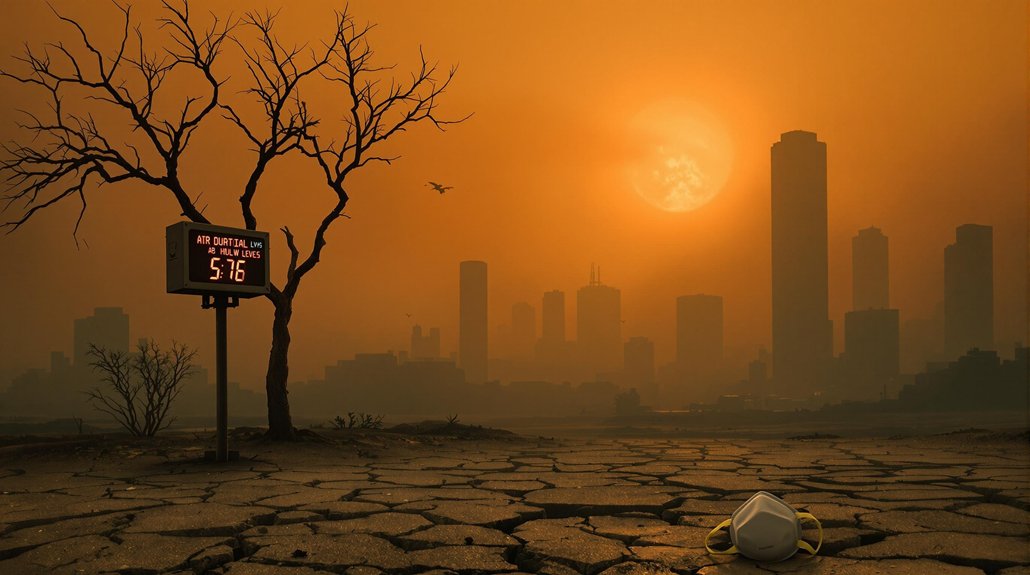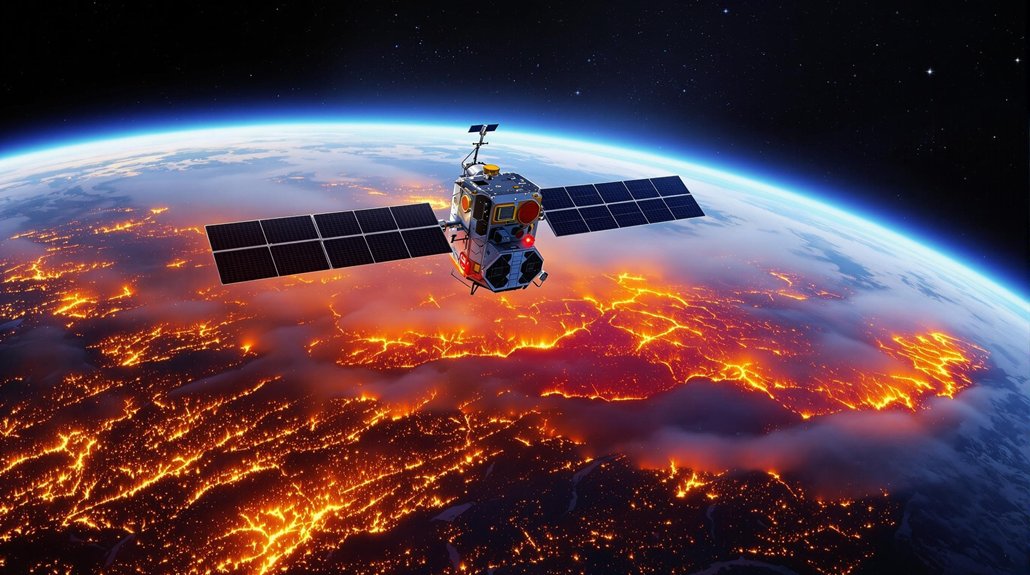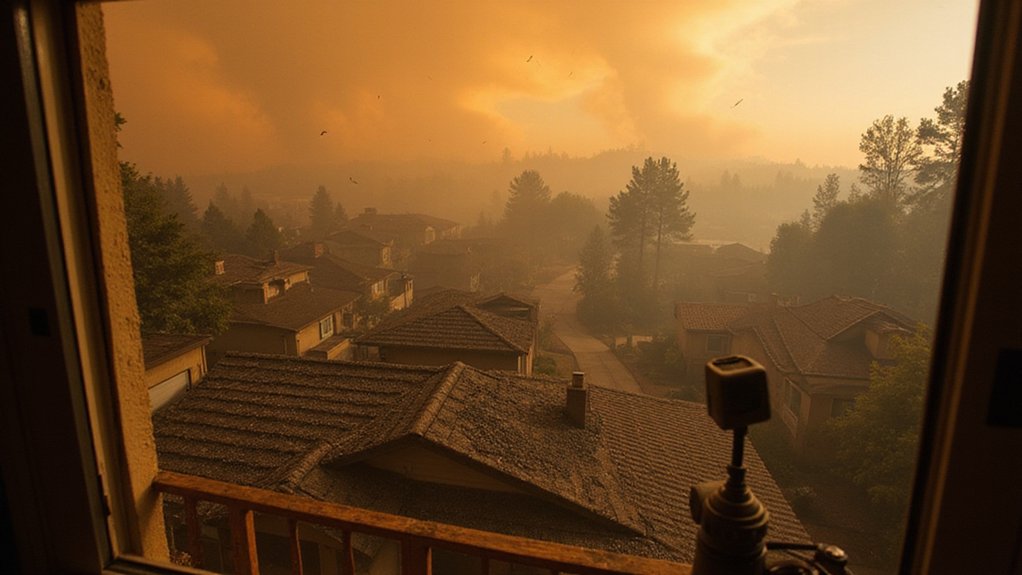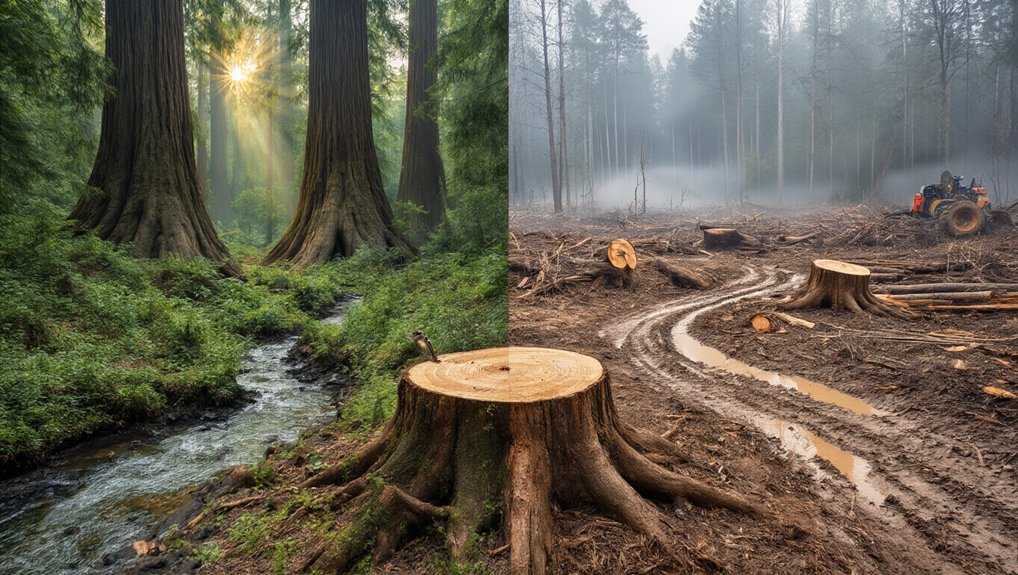Climate change has turned wildfires into a year-round nightmare. The toxic smoke now travels hundreds of miles, filling emergency rooms with gasping patients and emptying wallets nationwide. It’s not just about forest fires anymore—we’re trapped in a vicious cycle where fires release carbon, worsening climate change, triggering more fires. Yeah, those Clean Air Act gains? Going up in smoke. The apocalypse isn’t coming; it’s already here, choking us slowly.
Haze hangs heavy across once-clear skylines as climate change transforms wildfire seasons from predictable summer nuisances to year-round threats. Rising temperatures and drought conditions create the perfect storm for wildfires, turning forests into tinderboxes just waiting for a spark. It’s not rocket science. Warmer planet equals more fires equals more smoke. And boy, is there smoke.
Climate change isn’t giving us seasonal wildfires anymore—it’s delivering year-round smoke with a side of apocalypse.
This isn’t your grandfather’s campfire smoke. Today’s wildfire plumes travel hundreds of miles, carrying a toxic soup of particulate matter, carbon monoxide, and God-knows-what from burning houses and cars. PM2.5 particles—the really nasty, invisible ones—slip right into lungs and bloodstreams. They don’t discriminate, though kids, grandparents, and anyone with a breathing problem gets hit hardest. Many people face increased risk of respiratory infections when regularly exposed to wildfire smoke. Hospitals fill up. Emergency rooms overflow. All while the sky glows an apocalyptic orange.
The economic toll? Astronomical. Billions in healthcare costs alone, not counting closed businesses, canceled flights, and tourism dollars disappearing faster than clean air. People buy air purifiers like toilet paper in a pandemic. Schools shut down. And surprise! Low-income communities suffer most. Because nothing says “climate justice” like not being able to afford an air conditioner during a smoke emergency. The 2023 Chilean wildfires alone resulted in a staggering $4.39 billion in damages. The particulate matter from these fires contributes to the 4.5 million premature deaths caused by fossil fuel pollution annually.
Here’s the kicker: wildfires create their own vicious cycle. They release stored carbon, fueling the very climate change causing them. Forests that once absorbed carbon now belch it out. Even the Arctic—yes, the freaking Arctic—is burning, thawing permafrost and releasing more greenhouse gases.
Scientists project significant increases in wildfire activity by 2050. That’s not some distant future—that’s when today’s kindergarteners will be middle-aged. The Clean Air Act’s progress is literally going up in smoke.
We’re developing better prediction systems and forest management practices, but they’re Band-Aids on a bullet wound. The real solution? Addressing climate change itself. Otherwise, we’ll all be investing in gas masks instead of retirement plans.








